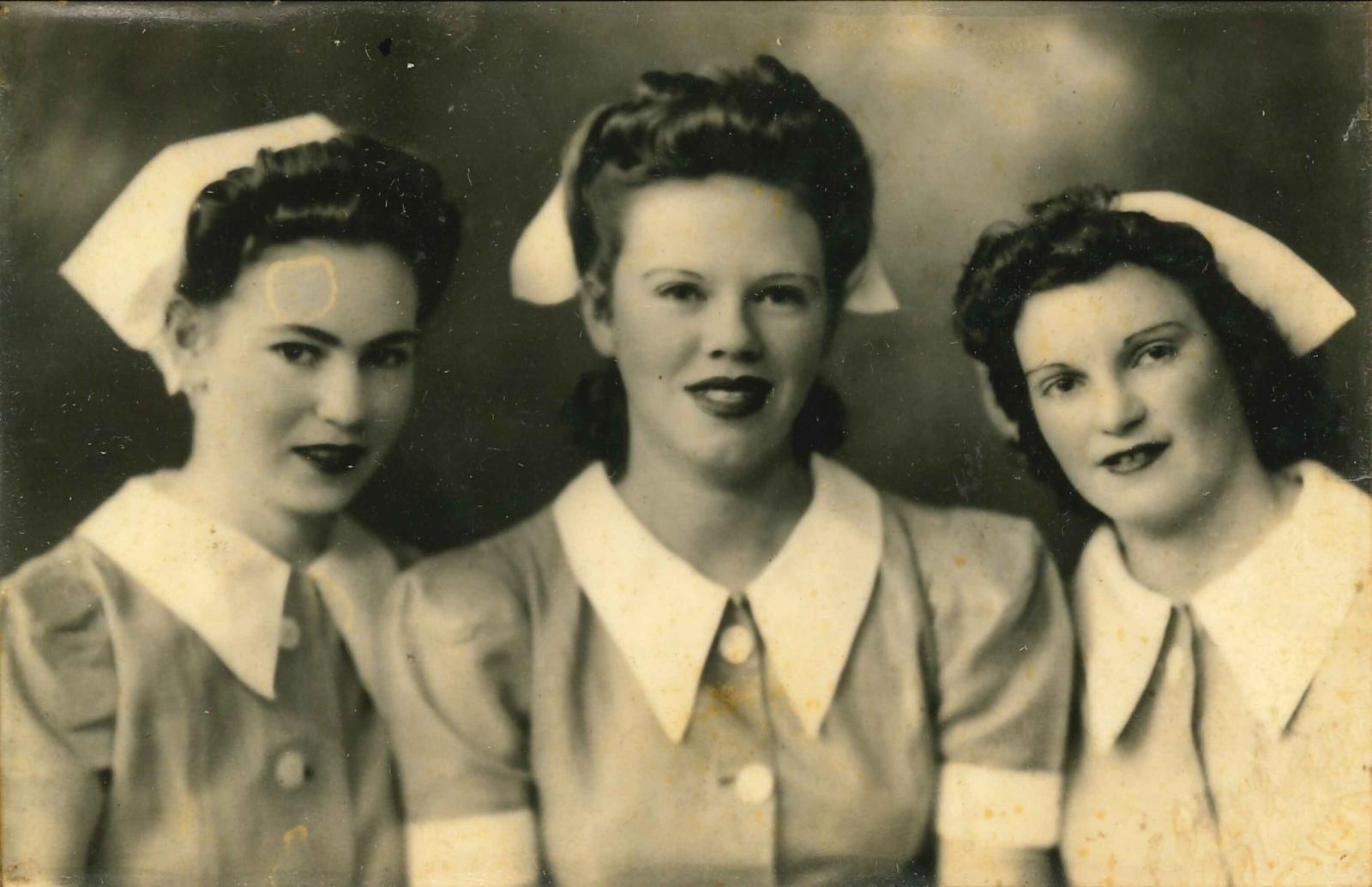The first civilian use of penicillin in Western Australia
RPH Museum


Top: Nurse Betty Kelly (centre) and two nurses in Perth Hospital uniform c1943
Bottom: Blue and white nurse's uniform belonging to Betty Kelly with one chevron on sleeve indicating first year training c1943
Nurse Betty Kelly
In 1944 young nurse Betty Kelly was believed to be the first civilian in Western Australia to receive life-saving penicillin.
It was the dawn of the antibiotic age and Betty’s own story is intertwined with a turning point in history when doctors finally had a medicine for previously incurable diseases.
Betty began her nursing career at the age of 17 and the height of World War 2, first at Baker’s Hospital in West Midland and then as a trainee at Perth Hospital, now Royal Perth Hospital (RPH).
Just 6 months into her new role, she caught potentially deadly meningococcal meningitis from a patient and in May was herself admitted in a “dangerous condition”.
Betty was in a coma for 6 weeks as Perth Hospital doctors did everything they could, ultimately using penicillin – a new ‘wonder drug’ – to save her.
Until that time antibiotic had been reserved for soldiers because supplies were limited.
Betty’s case, however, marked the start of its use in the wider WA community.
By late that year about 100 patients at Perth Hospital had been treated with penicillin, according to a report in The Sunday Times newspaper from 12 November 1944.
Thanks to the treatment, Betty made a full recovery.
She went on to marry the love of her life – James Read, a patient she met at Baker’s Hospital.
The couple wed in September 1945 and Betty retired as a nurse because women could not continue to practice once they were married.
Today, Betty’s nursing uniform, cape, aprons and photographs are held in the RPH Museum, kindly donated by her family.
Together with her story, they are a tangible link back in time to the early years of antibiotic use when health care was on the cusp of an exciting new era.
The first antibiotic
The development of antibiotics is one of the greatest advances in medicine. Before the discovery, minor diseases and infection from even a scratch could be deadly.
Penicillin was discovered in 1928 by Scottish physician and microbiologist Alexander Fleming.
After a holiday, Fleming returned to his laboratory and noticed mould growing on petri dishes he had left out was killing Staphylococcus bacteria.
In 1938, Australian medical scientist Howard Florey and German-British biochemist Ernst Chain began more research into the mould.
The work became urgent the following year when war broke out and many soldiers were dying from infected wounds.
At the beginning of the 1940s, Florey, Chain and their colleagues succeeded in producing a pure form of penicillin – the rest is history.
By 1944 penicillin was available to the Allied forces, but limited supplies meant the drug was not initially available to the public. By mid that year, though, penicillin was in use for the WA civilian population.
A monthly journal published by Perth Hospital – the Perth Hospital Journal – reported in September 1944 the drug was increasingly being used to treat meningitis, venereal disease and burns, with a subsequent dramatic fall in deaths from infections.